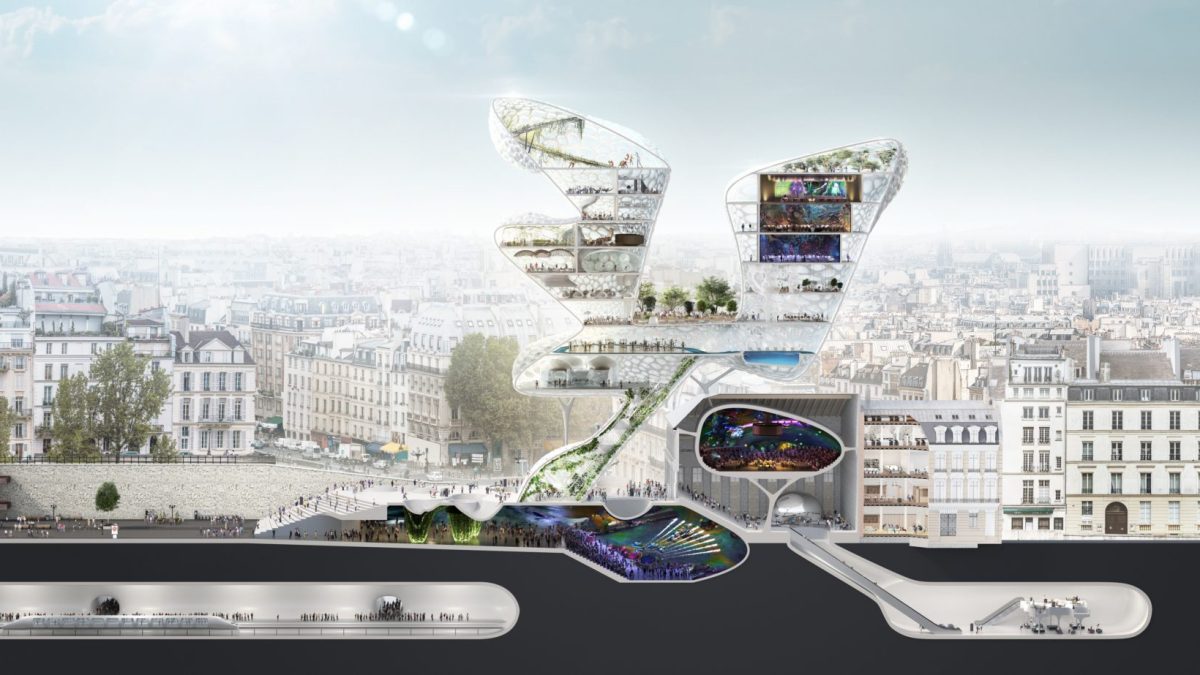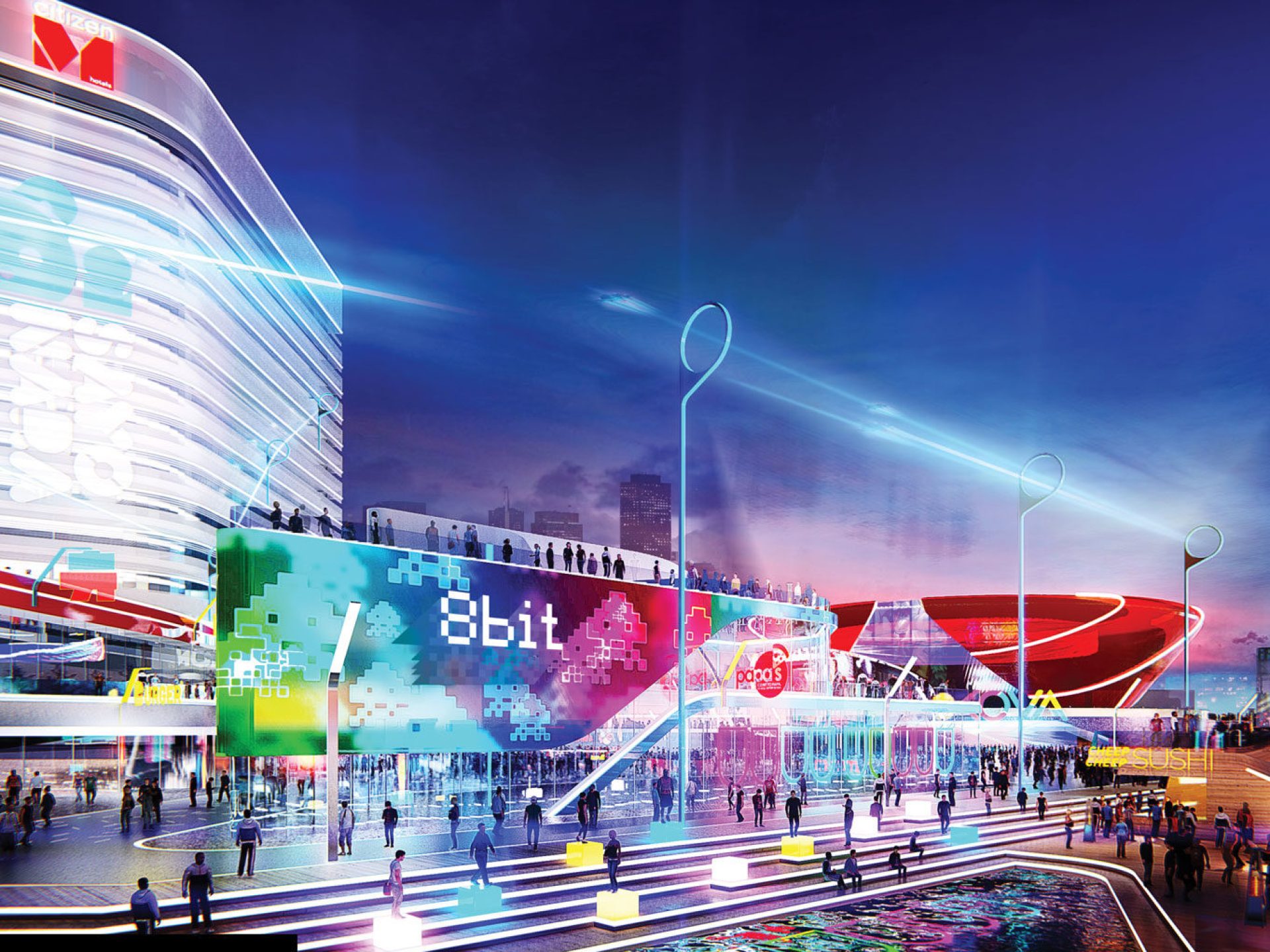News

March 6, 2019

As technology advances and demographic changes take place, architects need to be able to respond to the transition in fans from just being spectators at events to being active participants in the match-day environment. This means that we need to start by designing experiences rather than just the location of a seat in a seating bowl in order to allow live events to compete with other leisure opportunities.
Architecture is the means by which we create physical and digital space for these experiences, as well as taking advantage of new technology which can help stadia to improve the presentation of a live event and enhance the match-day experience. Stadia also need to respond to the key challenges of sustainability and environmental design. We are increasingly seeing the move of new stadia back into the centre of urban areas, following a period of time when they were banished to the freeways running around the periphery of cities. This gives new opportunities to integrate the stadium back into the urban environment and allow it to act as a catalyst for urban regeneration, creating a destination that will attract interest and activity
throughout the week.
We identified the following key themes which we believe will shape the nature of the stadium of tomorrow and redefine the stadium experience:
The significant investment required for the construction of a stadium means that it needs to maximise its operations and optimise its revenue generation. This means that venues are looking to find ways of transforming to host a range of different sports and other commercial activities, as well as providing additional attractions outside of its primary use. The new stadium for Tottenham Hotspur has been designed to host both Association Football and American Football for the NFL, offering bespoke facilities that will help to service both forms of football. A double-height conference and banquet space has also been provided, which offers hospitality on a match day, but will drive a fully-fledged conference business on non-match days. This business is also supported by the construction of an adjacent hotel, which can host players and support staff for sporting events and delegates for business networking events. The provision of a market place and onsite micro-brewery linked to a new public square will also lead to a range of activation opportunities outside of match days.
Stadia are often very large structures and as such careful thought needs to be taken on the embodied energy that is used in their construction. Sustainable strategies were developed during the Sydney Olympic Games where rainwater harvesting and natural ventilation were used to reduce the use of water and energy during the Games. These ideas were developed further in the London Olympic stadium, where significant portions of the stadium were constructed from recycled materials. The roof space of a stadium offers huge opportunities for energy collection and the design for the new South Stand for Fulham will incorporate photovoltaics on the roof, which will help to contribute to a 35% reduction in carbon emissions for the project. The roof also shelters a stunning roof terrace and garden which provides sweeping views up and down the river. Green planting on the façades will also be incorporated to reduce solar gain and improve the overall amenity of the riverside-facing spaces within the stadium.
Some of the biggest advances in technology relate to the size and scale of digital infrastructure and the development of a digital network that supports and promotes new user experiences in and around the stadium. The development of comprehensive mobile and Wi-Fi networks is starting to provide full connectivity for fans, which in turn will provide digital information guiding fans along the transport networks to the stadium and then circulating around the stadium itself. Large-scale LED screens are increasingly being used on both the exterior façades of stadiums and inside the seating bowl to communicate with fans and provide opportunities for interactions through digital apps and touchscreen interfaces. LED boards now wrap around the perimeter of the pitch and around various levels of the stadium and allow the possibility to vary the look and feel within the stadium through digital displays. External façades can also be animated with programmable LED lighting and effects that can be fully coordinated with match-day presentation within the seating bowl to create an integrated visual environment.
A combination of advances in digital technology... means that a whole new range of opportunities are being opened up to enable fans to interact with venues in more ways...
A combination of advances in digital technology and the move for architects to design stadia within a comprehensive BIM environment means that a whole new range of opportunities are being opened up to enable fans to interact with venues in more ways than just the traditional physical visit to the building. Tottenham Hotspur has utilised a full range of virtual and augmented reality as part of their engagement with fans at the new stadium. Hospitality sales have been driven out of a VR sales suite, rather than the more traditional mock-up of a hospitality box, with interactive 3D walk-throughs and augmented reality also utilised to enable customers to get a much more realistic perspective of the new stadium before they buy their tickets. They have also recently launched their general admission sales with a digital platform that allows fans to explore each individual seat in an online 360-degree bowl environment, which provides interactive seat views on their mobile phones.
Having the ability to provide different playing surfaces within a stadium opens up a much wider range of possibilities for hosting sports and entertainment events and developing a transformable venue. This was a key factor for Tottenham Hotspur in developing their innovative moving pitch that provides a natural grass surface for Association Football and artificial grass for American Football. Significant investment in modelling and prototyping the fully-automated pitch trays was undertaken to ensure that the dynamic performance of the playing surface and behaviour of the joint between moving sections of the pitch was fully understood and compatible with the sport, ahead of construction. The speed of changeover provided by the automated system was also a key concern in being able to offer optimum flexibility in event planning and transitions between sports and surfaces, which will open up new options for promoters in scheduling events.
As part of the technological revolution in society, people are becoming increasingly reliant on their smartphones to direct, organise and even pay for purchases. Digital apps are now commonplace and the role of cash in transactions is steadily reducing, as younger generations grow up without an understanding of how a cheque, notes or coins would be used in a transaction. Tottenham Hotspur have taken the bold decision to make their new stadium a completely cashless venue, which will require fans to
pay for food and drink and other retail purchases with a digital device. This opens up opportunities for varying the commercial offers within the stadium during an event and for fans receiving information and offers during a match that can be linked to the outcome of a game or future event. Digital signage in retail areas and around concessions can also be linked to the same digital platform and adjust pricing and offers according to the commercial environment.
One of the big advances in the design and planning of stadia has been to see how they can be fully integrated into urban environments and move away from being standalone object buildings that only come to life on a match day. The new South Stand for Fulham FC includes the opening-up of a new river walk along the river Thames, which will restore a section of river walk that is currently interrupted by the existing stadium. This river walk will be activated by the food and drink concessions from the stand, which open out to the new boardwalk and which will also serve fans on a match day. New residential apartments act as a book-end to the new stand, while hospitality lounges within the stand will transform into meeting rooms and offices that will provide activity outside of a match day.
The movement of spectators to and from a large stadium can provide one of the most challenging logistics associated with the planning of an event. As road networks struggle to cope with the pressures of increasing traffic and local residents battle to find parking close to home on a match day, public transport solutions have become increasingly important in making transport to an event a safe and comfortable experience. The selection of Stratford for the London Olympic Park was heavily influenced by the extensive public transport network that linked this area with the rest of the city, and the ease with which large crowds move into and out of the Queen Elizabeth Park is a testament to the efficiency and diversity of this network. Linking the Olympic Park with local, national and international public transport networks only serves to enhance its reputation for successfully hosting major events.
Lorem ipsum dolor sit amet consectetur, adipisicing elit. Non facere corporis et expedita sit nam amet aut necessitatibus at dolore enim quis impedit eius libero, harum tempore laboriosam dolor cumque.
Lorem, ipsum dolor sit amet consectetur adipisicing elit. Illo temporibus vero veritatis eveniet, placeat dolorem sunt at provident tenetur omnis, dicta exercitationem. Expedita quod aspernatur molestias eum? Totam, incidunt quos.